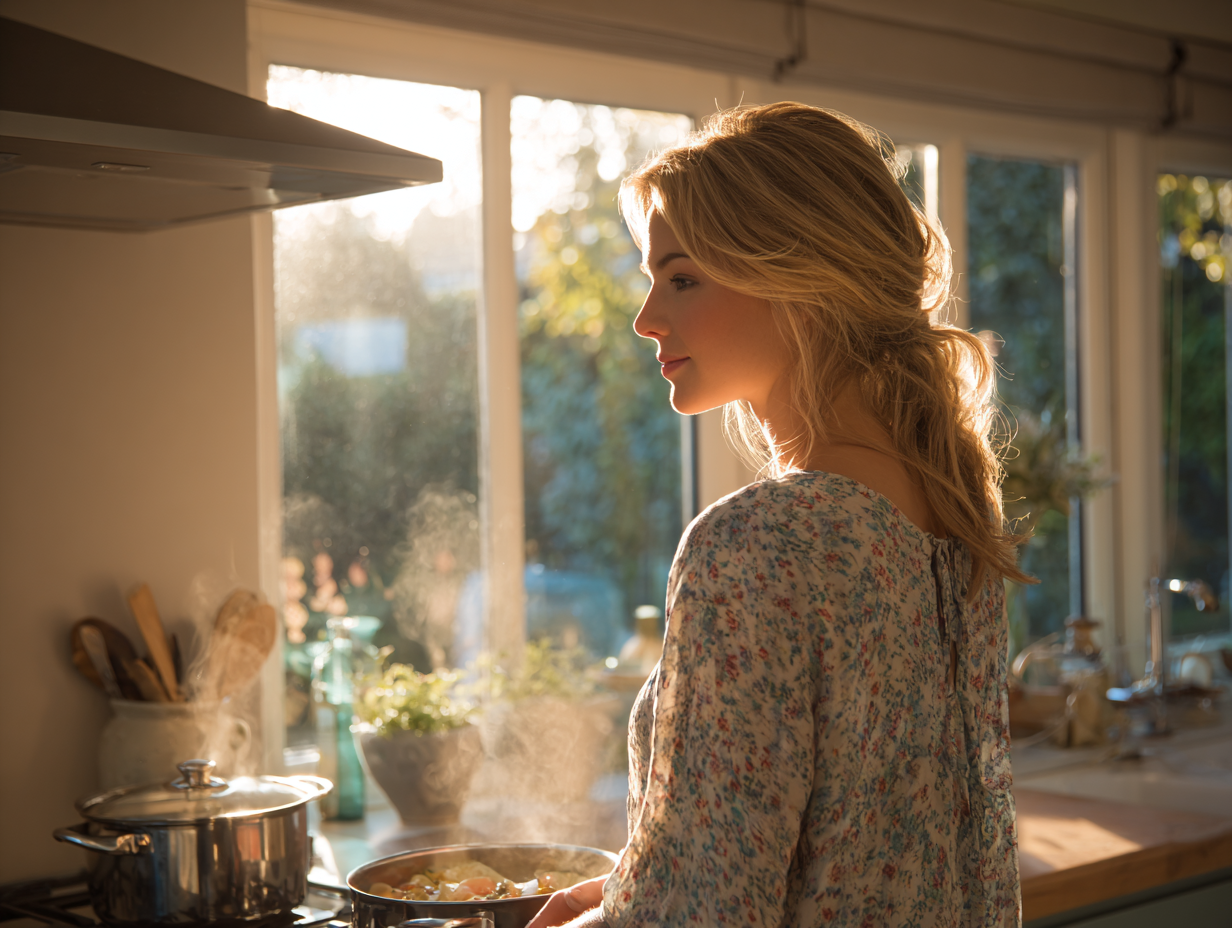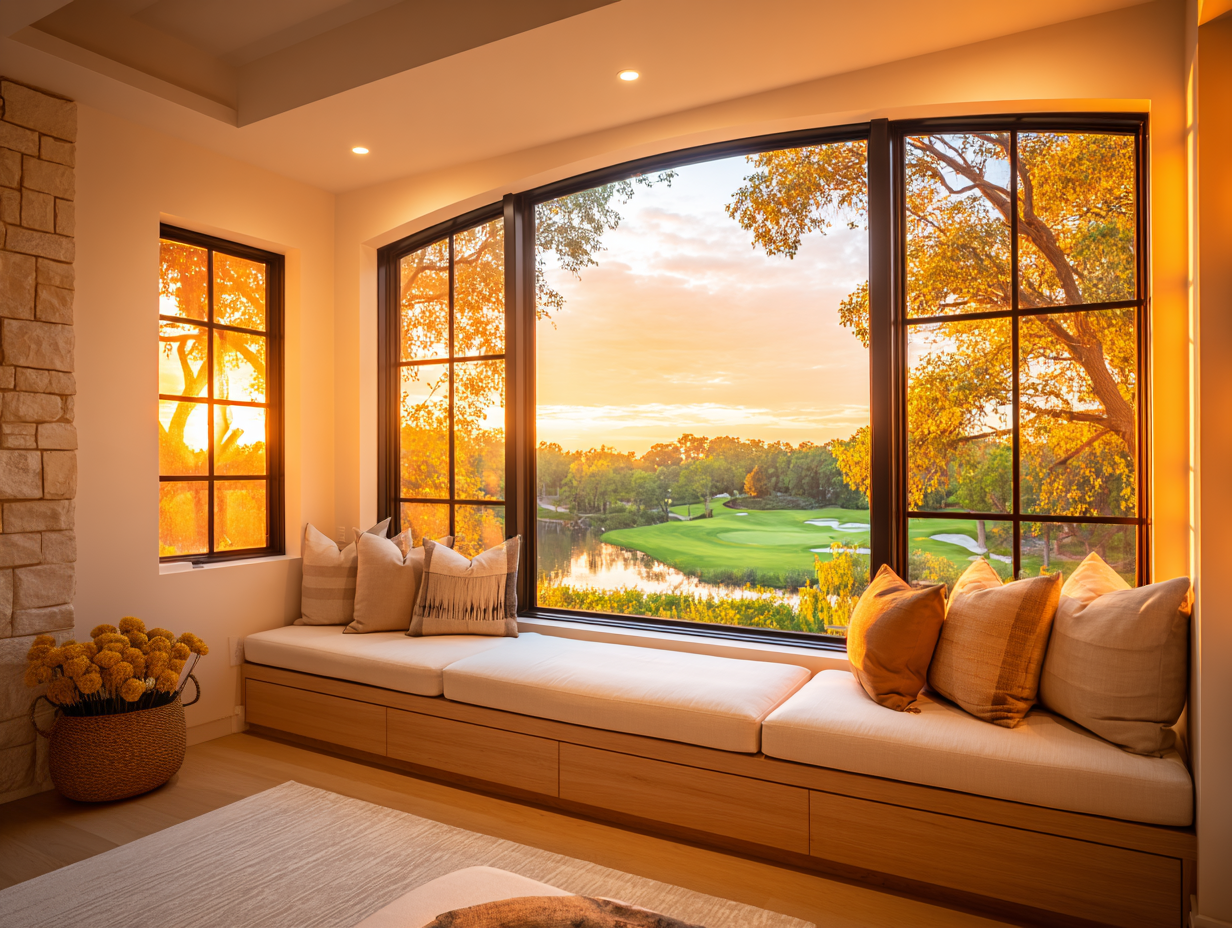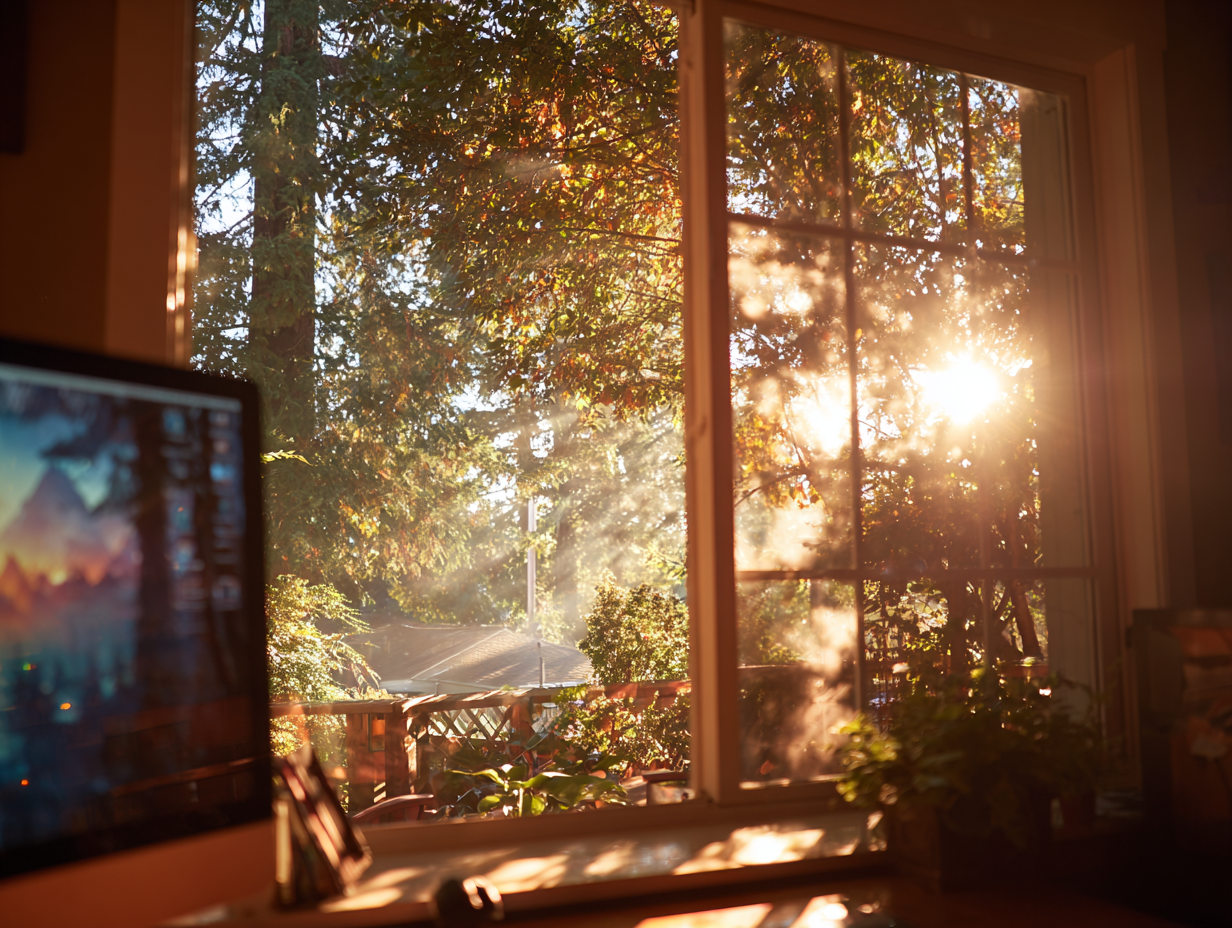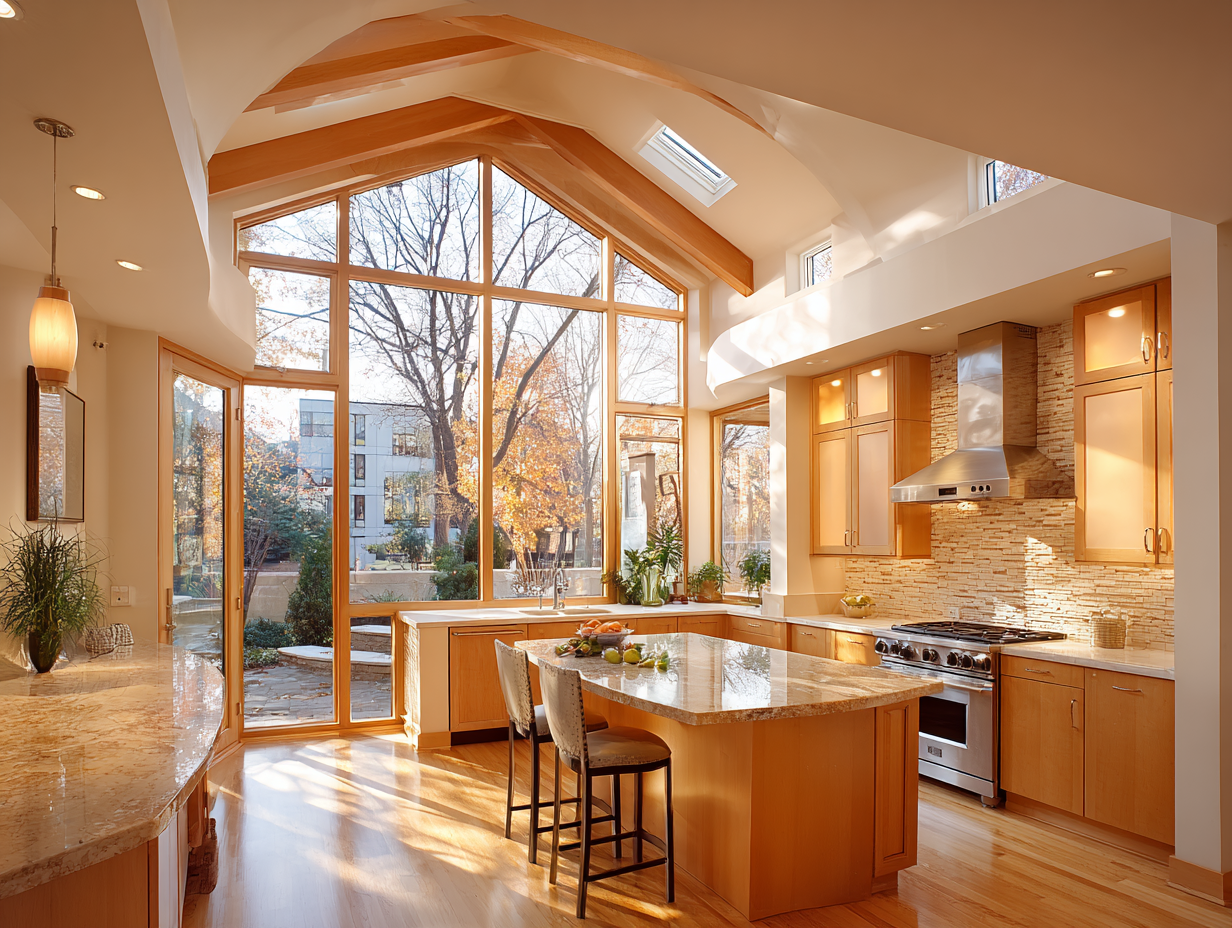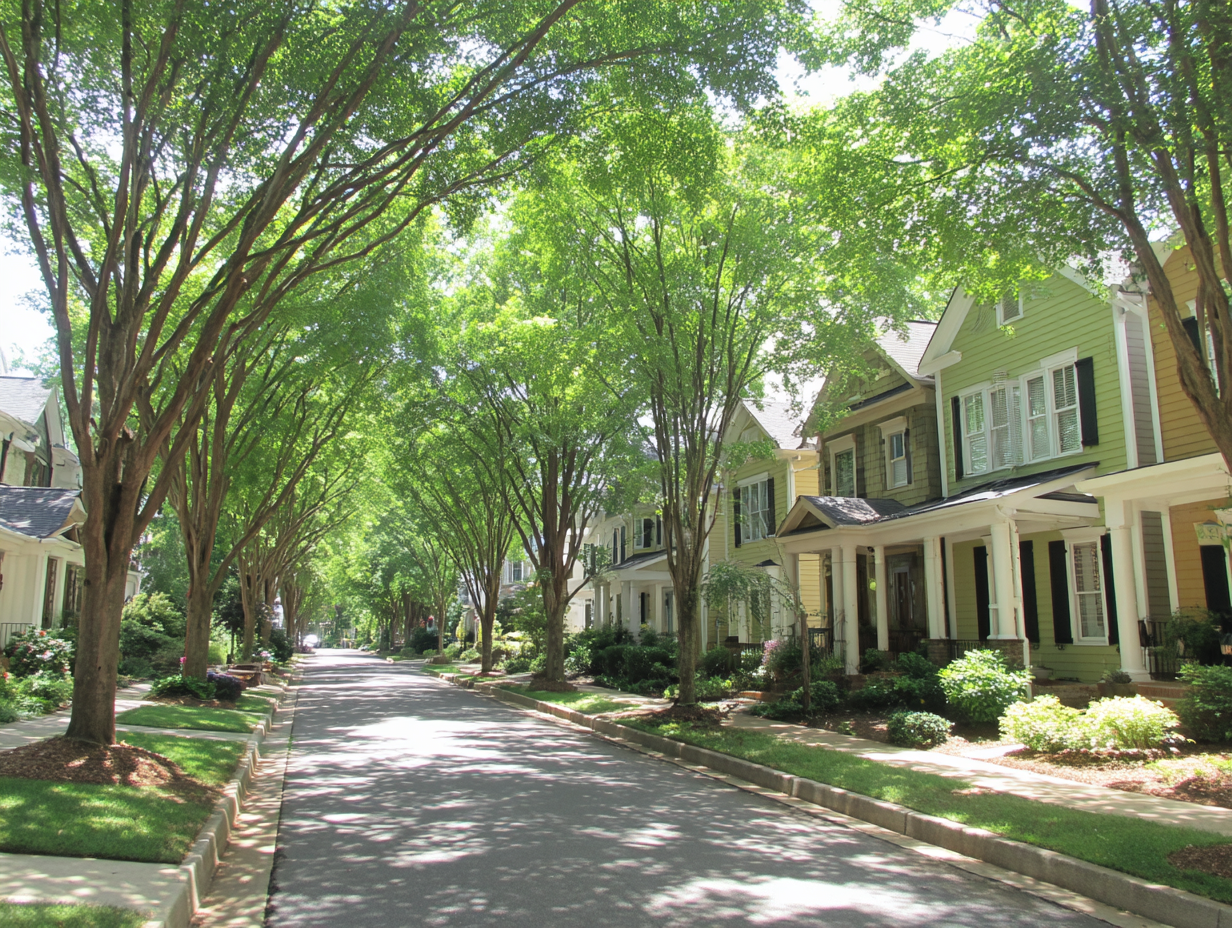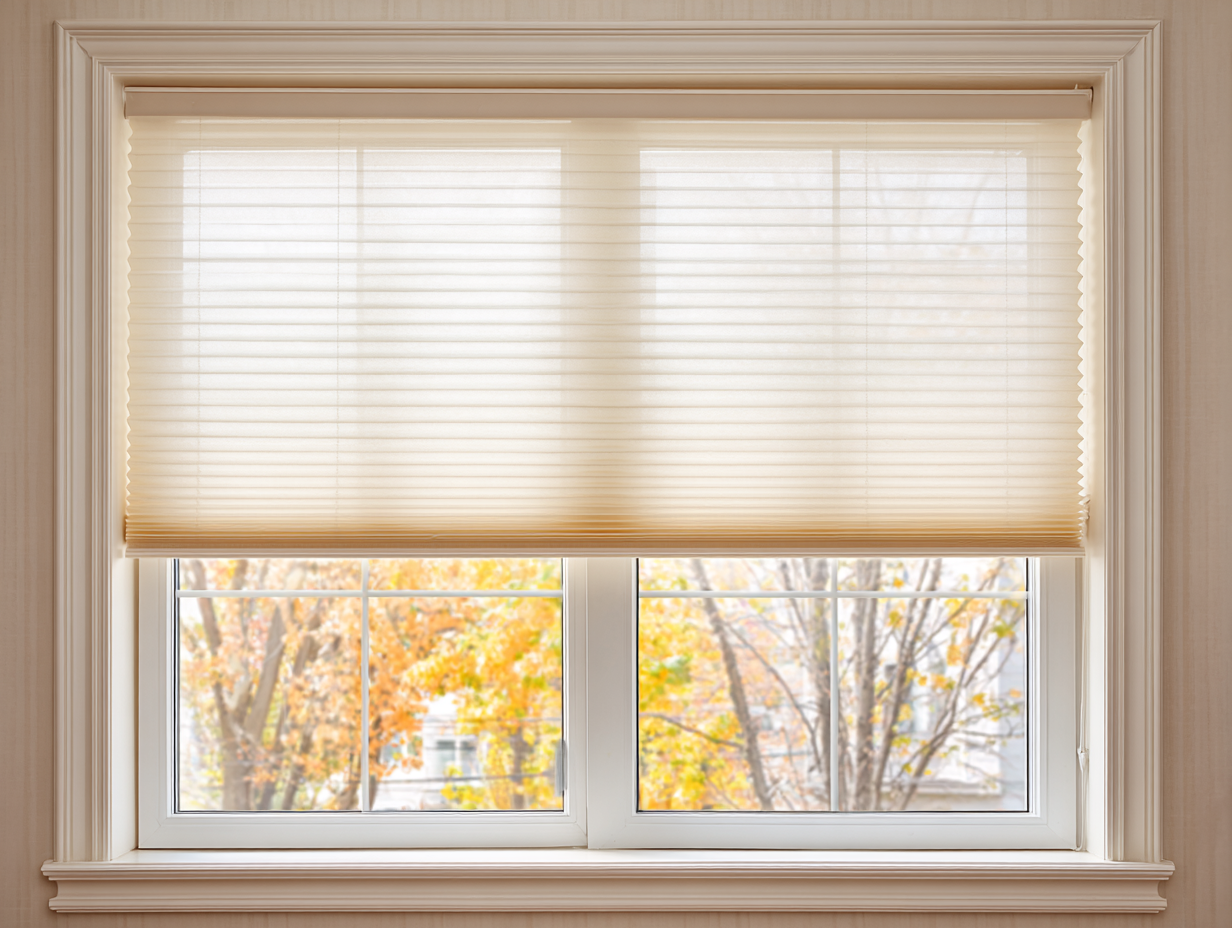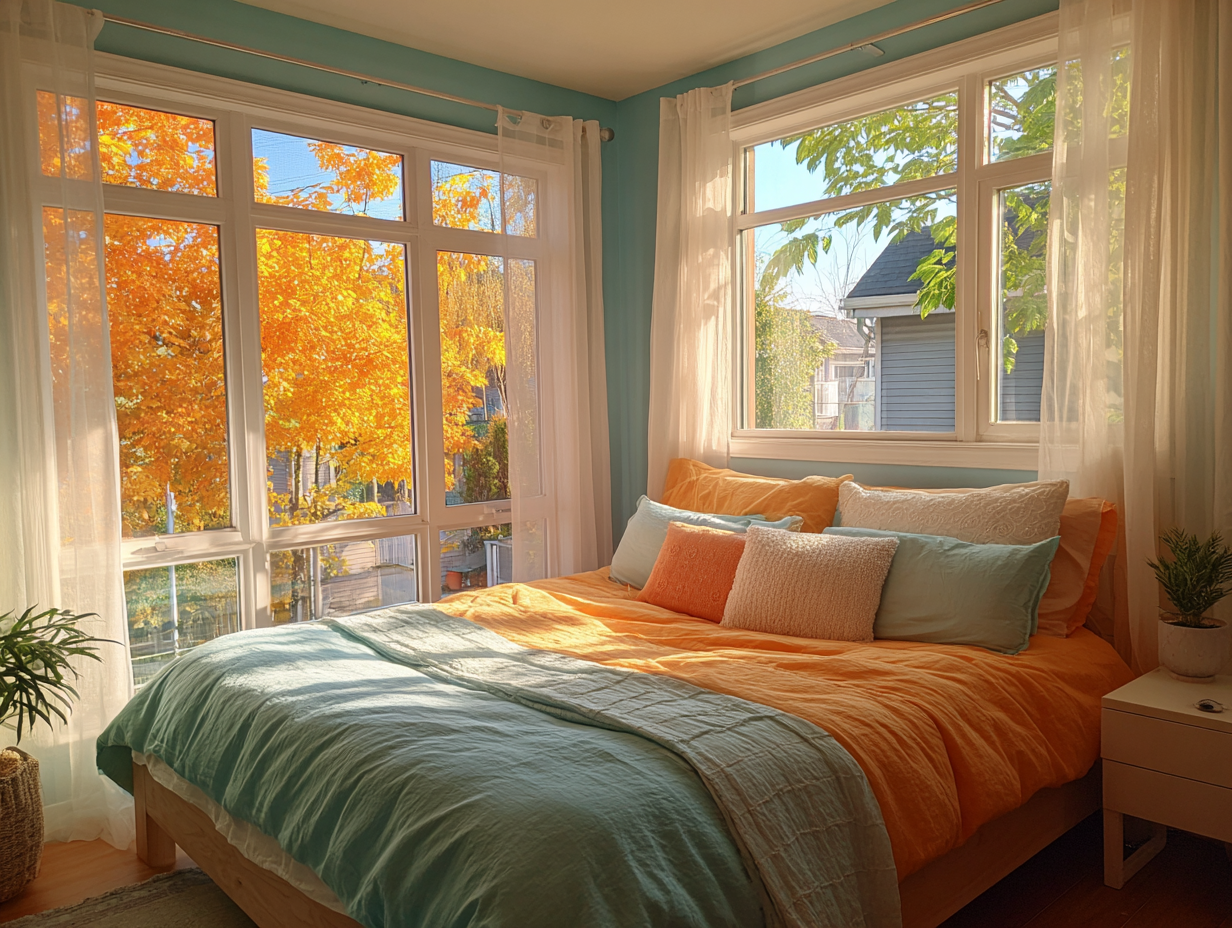If you’ve ever walked into a home at 4 p.m. in July and felt the sun pouring through the windows like a spotlight, you already know orientation matters. Which way a home faces determines how the sun moves across your rooms, how comfortable those spaces feel hour-to-hour and season-to-season, how hard your HVAC has to work, and—yes—how buyers perceive value. In short, orientation isn’t just an architect’s puzzle; it’s a real-world lever for everyday livability and long-term costs.
Below, we’ll break down how morning vs. evening sun behaves, why it changes with the seasons, what that means for comfort and utility bills, and how you can use this knowledge to buy smarter, improve your current home, or position a property to shine on the market.
Orientation 101: A Quick Sun-Path Primer
The sun rises in the east and sets in the west—simple enough—but the angle of the sun changes throughout the day and across the seasons. Midday sun is higher, winter sun is lower, and the path length varies from summer to winter. Those angles are what create differences in brightness, glare, and heat gain.
Here’s the everyday translation:
East-facing rooms take in softer, cooler morning light. Great for kitchens and breakfast nooks where you want a cheerful start without overheating.
South-facing rooms (in the Northern Hemisphere) get the most sun exposure overall, with higher-angle midday light. They’re bright in winter when the sun sits lower, making them prime candidates for passive warmth.
West-facing rooms catch intense late-day sun. That golden-hour glow looks gorgeous, but the heat can spike in the afternoon, especially in warmer months.
North-facing rooms receive consistent, indirect light—flatter and more even, with minimal glare. Fantastic for offices, studios, and spaces where screen time or concentration matters.
Morning vs. Evening Sun: What It Feels Like in Real Life
Imagine walking through a home twice: once at 8 a.m., once at 5 p.m. The experience will be dramatically different.
Morning (East)
Mood & function: East light is gentle and energizing—ideal for routines like coffee, breakfast, and getting kids out the door. If your kitchen or casual dining area faces east, it’ll light up without baking you in heat.
Comfort: Cooler morning temperatures pair well with east exposure. If you’re someone who runs warm when cooking, morning light is your friend.
Energy use: In summer, east light becomes toastier by mid-morning but still tends to be easier on your HVAC than west light. In winter, it’s welcome warmth that helps take the chill off early.
Midday (South)
Mood & function: South exposure is the workhorse of natural light—bright, long-lasting, and fantastic for living rooms, playrooms, and home offices. Plants love it. So do solar panels.
Comfort: Without good shading and glazing, midday sun can create hot spots. But because the sun is higher at noon, overhangs, pergolas, and trees can be very effective at controlling heat and glare.
Energy use: In cooler months, south exposure can reduce heating needs. In hot months, invest in shading and low-e windows to keep your HVAC from overworking.
Evening (West)
Mood & function: West light is saturated and dramatic—your golden-hour photo op. It’s perfect for sunset watchers and dinner-time ambiance.
Comfort: West exposure is the most likely to overheat spaces, particularly bedrooms and bonus rooms. If your primary bedroom faces west, blackout shades and higher-performance glass are worth every penny.
Energy use: Late-afternoon heat gain is expensive in summer because your AC fights the hottest part of the day. That’s when strategic shading (exterior screens, trees, awnings) pays dividends.
Seasonal Differences: Why June and January Feel Worlds Apart
The same home can feel completely different in July than it does in January, and orientation is the reason.
Summer: The sun’s path is higher and longer. This means south-facing windows receive strong midday light from above. Well-designed overhangs cast shade in summer (think: a built-in baseball cap for your house). East and west exposures can be brutally bright because the sun sits lower on the horizon during those hours, punching through glass at a more horizontal angle. Result: glare and heat.
Winter: The sun tracks lower, letting light penetrate deeper into south-facing rooms. That’s free heat and cheer—especially important for open living areas. East light helps warm kitchens early; west light adds a cozy end-of-day glow to dens and bedrooms. North rooms stay steady but cooler, keeping that even, shadowless illumination artists love.
Comfort: Not Just Temperature, But How You Use the Home
Comfort isn’t only about thermostat settings. It’s how your body feels in the space (glare on screens, eye strain when reading, the way tile floors warm up under the sun) and how you move through your day.
Glare on screens: North light is easiest on laptops and TV viewing. West light can ruin a movie night without good shades. South light is wonderful if diffused (sheer shades, cellular blinds).
Sleep quality: If you’re light sensitive, avoid east-facing bedrooms unless you love waking with the sun. Blackout shades can fix this, but if you’re shopping, put “bedroom sun” on your showing checklist.
Cooking comfort: A west-facing kitchen can turn into a sauna right when you’re prepping dinner. If that’s your layout, price in heat-control upgrades (window film, low-e replacements, or exterior shading).
Home offices: South or north exposures are ideal, depending on your glare tolerance. East can be great if you work early; west may require serious shade management for afternoon video calls.
Energy Use: How Orientation Affects Your Bills
The more sunlight (and heat) that pours into a home, the harder your systems work to rebalance. A well-oriented home uses the sun strategically.
Heating reduction in winter: South-oriented glazing can provide passive solar warmth. Pair it with thermal mass (tile or concrete floors that absorb daytime sun and release heat slowly) and insulated window treatments at night.
Cooling loads in summer: West and, to a lesser extent, east exposures drive up AC use. Exterior solutions—deciduous trees, adjustable awnings, exterior shades—block sun before it hits the glass, which is more effective than interior blinds alone.
Window performance: Look for low-e, double- or triple-pane units with an appropriate Solar Heat Gain Coefficient (SHGC) for your climate. Lower SHGC reduces heat gain—especially useful on west-facing elevations—while U-factor indicates insulation value.
Ductless mini-splits & zoning: If one side of the house invariably runs hotter (often west), zoning or a dedicated mini-split in that problem room can reduce whole-house overcooling.
Smart shades & thermostats: Automated shades that drop in the afternoon combined with a learning thermostat can flatten your daily energy spikes.
Natural Light and Well-Being: The Human Factor
There’s a growing body of interest (and common sense) around the importance of daylight for mood, productivity, and circadian rhythm. Homes with balanced natural light often feel better. Morning sun can gently cue your wake cycle; steady midday illumination can elevate focus. Too much glare, however, causes fatigue and pushes people to close blinds—negating the benefits. The sweet spot is controlled daylight: bright when you need it, softened when you don’t.
Resale and Perceived Value: Why Buyers Care
Orientation influences how buyers experience a home at showings—especially if those showings happen during peak sun hours.
“Light and bright” without “hot and harsh”: Homes that deliver abundant daylight while staying comfortable test well with buyers. South-facing living spaces with proper shading tend to photograph and show extremely well.
Premium for views and sunsets: In markets where water or horizon views matter, west-facing porches and living rooms can command a premium—if the heat and glare are tamed. The combination of view and comfort is the magic formula.
Functional alignment: Kitchens that glow in the morning, living rooms that stay bright and fresh all day, and bedrooms that feel cool and restful in the evening read as “well designed,” even if the square footage is the same as similar homes nearby.
Lower operating costs: Energy-conscious buyers are increasingly savvy. If you can demonstrate lower seasonal bills thanks to orientation and upgrades (window specs, shading strategies, solar), you differentiate your listing.
Room-by-Room Best Bets
Kitchens & breakfast nooks: East or southeast for morning cheer and cooler prep at dinnertime.
Living rooms & family rooms: South or southeast for all-day light; design shading for summer comfort.
Home offices & studios: North for consistent, low-glare light, or south with diffusing shades.
Bedrooms: West exposure delivers sunsets but can be hot—pair with high-performance shades. East wakes early risers. North is calm and cool.
Porches & outdoor rooms: Covered west-facing porches can be magical at golden hour if ventilated and shaded. South porches are comfortable most of the year with overhead cover.
Lot and Neighborhood Variables That Change the Equation
Orientation is the starting point, not the whole story. Four more factors matter:
Tree canopy: Deciduous trees on the west side block summer heat and allow winter sun. Evergreen windbreaks to the north can reduce winter drafts.
Topography: A home on a rise may catch more breeze (and evening relief). Low-lying lots can feel muggy, making afternoon sun tougher to manage.
Neighboring structures: Tall homes or buildings to the south can shade you in winter, changing your thermal assumptions. Corner lots may enjoy multiple exposures and better cross-breezes.
Surface reflectance: Light-colored paving or water surfaces can amplify glare. Dark roofs or driveways nearby can build heat islands.
If You’re Buying: A Simple Orientation Checklist
Tour the property at two different times if you can (morning and late afternoon).
Stand in each room and look toward the windows. Note glare on screens and where the sun hits floors/walls.
Ask about window specs: low-e coatings, SHGC, tinting, age, and frame type.
Step outside and study shading: overhangs, porches, trees, and neighboring shadows.
Look for hot-spot rooms (often west-facing bonus rooms or FROGs). Probe how the sellers use those spaces mid-summer.
If You’re Selling: Orientation-Smart Staging and Marketing
Time your photos and showings. Photograph rooms when light is flattering, not blinding. If west rooms run hot at 4 p.m., aim for morning showings or close shades and cool the room ahead of time.
Demonstrate control. Layer window treatments—sheers plus blackouts—so buyers see flexibility. If you’ve installed low-e windows or exterior shading, highlight those upgrades in marketing remarks.
Style for the light. Lighter rugs and matte finishes reduce glare in bright spaces. Mirrors can bounce morning light deeper into east rooms.
Tell the story. “Sun-splashed morning kitchen,” “all-day southern light in the living room,” and “golden-hour porch” are phrases that help buyers picture daily life.
Retrofit Playbook: Tuning an Existing Home for Better Light and Lower Bills
Windows: Consider targeted replacements on the hottest elevations first (often west). Choose a lower SHGC for those sides. If full replacement isn’t in budget, look at interior cellular shades, exterior solar screens, or professional window films.
Shading structures: Pergolas with adjustable slats, retractable awnings, or deep eaves over south and west windows cut summer heat while preserving winter light.
Landscaping: Plant deciduous trees on the west to provide seasonal shade. Use native species suited to your climate for resilience and lower maintenance.
Ventilation: Add operable transoms or trickle vents to encourage daytime stack effect (hot air out high, cool air in low). Ceiling fans help, but don’t reduce air temperature—pair them with shading for real cooling benefits.
Insulation and air sealing: A tight, well-insulated envelope makes orientation strategies more effective by holding desired temperatures longer.
Solar Panels and Orientation
If you’re considering solar, orientation is money. In the U.S., south-facing roof planes generally yield the highest production, with southeast and southwest also performing well. East and west arrays produce more in the mornings or afternoons, respectively, and may align with your usage patterns (e.g., you’re a morning household). Some utilities reward late-day production, which can make a west tilt financially competitive—even if total annual output is slightly lower.
Common Myths—And The Reality
“North-facing rooms are dark and gloomy.” Not necessarily. They’re consistent and glare-free. Pair them with light palettes and reflective surfaces; they can be serene and highly functional.
“West light is always bad.” It’s powerful and warm—fantastic for mood and sunsets if you manage heat gain.
“Orientation doesn’t matter with modern HVAC.” HVAC can compensate, but at a cost. Good orientation plus smart design reduces spikes and makes systems last longer.
Putting It All Together: A Day in a Well-Oriented Home
Morning light streams into an east-facing kitchen while the house stays cool and quiet elsewhere. By midday, south-facing living areas are bright but shaded by overhangs, so you can read on the sofa without squinting. As the day warms, exterior shades on the west automatically lower. By dinnertime, the porch glows in golden light, but the interior stays comfortable. Come winter, the same south windows welcome warmth, so the heater runs less, and the tiled floor holds onto that sun well after sunset. That’s orientation working for you—lower bills, higher comfort, and a daily cadence that feels right.
Quick Reference: Best Uses by Exposure
East: Breakfasts, kitchens, morning workouts, playrooms for early risers.
South: Living rooms, dens, plant-happy sunrooms, home offices (with diffusers).
West: Dining rooms and porches for sunset lovers; be prepared with shading and performance glass.
North: Studios, offices with lots of screen time, guest rooms that benefit from cooler temps.
Final Thought
You can’t move the sun, but you can work with it. Whether you’re house hunting, modernizing a beloved place, or preparing a listing, paying attention to orientation helps you harness natural light, control energy costs, and elevate everyday comfort. Buyers may not always use the word “orientation,” but they feel its effects the moment they step inside—how rooms glow in the morning, how comfortably the living space holds its cool at 3 p.m., how the porch captures sunset without the scorch. Get that right, and you’re not just selling square footage; you’re showcasing a better daily life.

